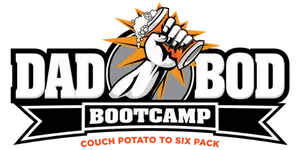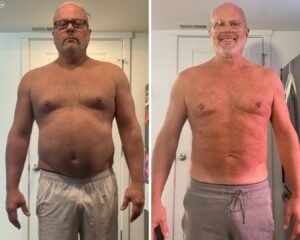It seems mainstream media is intent on making dad bods cool, but that doesn’t mean we should get comfortable and let ourselves go. If you’re like most people, you’re probably always on the lookout for new diet trends that can help you lose weight, build muscle, or just feel better overall.
The good news is there are plenty of different types of diets out there that can offer real health benefits. The bad news is that it can be tough to keep up with all the latest buzzwords and fad diets.
To help you sort through all the noise, we’ve put together a guide to some of the most popular types of diets and their potential health benefits.
The Paleo Diet
The Paleo diet is based on the premise that we should eat as our ancestors did. That means focusing on whole, unprocessed foods like vegetables, fruits, meat, and fish. Your meals will be made from single-ingredient foods such as beef and broccoli or rice and chicken dishes.
There are a few different variations of the Paleo diet, but all of them emphasize eating real, whole foods and avoiding processed foods, sugar, and grains.
Some people report feeling more energetic and having better digestion when they follow a Paleo diet. There is also some evidence to suggest that the Paleo diet can help you lose weight and improve your cholesterol levels.
This diet is for you if you’re looking for a way to eat that emphasizes whole, unprocessed foods. It can be a bit challenging to follow, but it may offer some health benefits.
The drawbacks of this diet are that it can be expensive and time-consuming to find and prepare all the whole foods you’ll need. It’s also worth noting that our ancestors didn’t have access to some of the healthy foods we have today, such as certain vegetables, fruits, and grains.
The Mediterranean Diet
The Mediterranean diet is based on the traditional foods eaten in countries like Greece, Italy, and Spain.
This type of diet is rich in healthy saturated fat, fresh fruits and vegetables, whole grains, fish, and moderate amounts of wine. Meals are typically built around plant-based foods, with small portions of meat or cheese. Olive oil is a key component of the Mediterranean diet, and many people who follow this way of eating report feeling more satisfied after meals.
There is evidence to suggest that the Mediterranean diet can help improve heart health, reduce the risk of cancer, and promote weight loss. It has also been shown to lower blood pressure, improve cholesterol levels, and reduce the risk of stroke. It has even been linked to a reduced risk of Alzheimer’s disease.
Try this diet if you’re interested in a heart-healthy diet that includes lots of delicious food.
Gluten-Free Diet
A gluten-free diet is free from protein gluten. Gluten is found in wheat, barley, and other grains used to make your favorite bread, desserts, and pasta. This type of diet is often necessary for people with celiac disease, an autoimmune disorder that causes damage to the small intestine when gluten is consumed.
For people with celiac disease, a gluten-free diet is the only treatment available. However, some people without celiac disease report feeling better when they avoid gluten. They may experience less bloating, gas, and diarrhea.
If you think you might be sensitive to gluten, talk to your doctor before starting a gluten-free diet. This type of diet can be difficult to follow and may not offer any real health benefits if you don’t have celiac disease.
Ketogenic Diets
The ketogenic diet, aka the keto diet, is high in healthy fats and restricts almost all carbohydrates. It’s similar to the once-popular Atkins diet, one of a few high-fat diets, but it’s stricter about carbs.
You might recall the big media hoopla when Jillian Michaels denounced the keto diet, calling it a “bad plan for a million reasons.”
But what is the keto diet?
The goal of ketogenic diets is to force your body into a state of ketosis. That’s when your body starts burning fat for energy instead of carbohydrates.
People who follow a ketogenic diet eat mostly fatty foods like meat, cheese, butter, and unprocessed oils. They avoid carbs as much as possible, including bread, rice, pasta, potatoes, fruit, and sugar.
There are a few different variations of the keto diet, but all of them involve eating very few carbs and a lot of fat. Since that Jill Michaels snafu, studies have come out in support of this trendy diet.
It’s for you if you have type 2 diabetes or you’re looking to lose weight quickly while still indulging in cheese and bacon. It’s also for you if you’re willing to stick to a strict diet plan.
Can you give up pasta? Be aware that the high-fat keto diet can be difficult to follow and can cause some unpleasant side effects, such as the keto flu.
The Vegan Diet
The vegan diet isn’t new at all but is it right for you? It’s based on the premise that we should not eat any animal products, which means no meat, eggs, and dairy.
Veganism is a lifestyle as well as a diet, and it encompasses everything from the food we eat to the clothes we wear.
People who follow a vegan diet report feeling more energetic and having better digestion. They also tend to have lower levels of cholesterol and blood pressure. In addition, vegans tend to be thinner than people who eat meat and dairy.
Some studies suggest that vegans aren’t getting their daily recommended intake of vitamins and minerals, but this can easily be fixed with a daily supplement.
If you’re interested in trying a vegan diet, do your research first. There are many delicious vegan recipes available online, and there are also plenty of foods that are naturally vegan, such as fruits, vegetables, grains, and beans.
Vegan vs. Plant-Based Diets
There’s a lot of confusion about the difference between a vegan diet and a plant-based diet. Both diets exclude meat, eggs, and dairy, but a vegan diet goes one step further by also excluding all animal products. That means no honey, no leather, and no wool.
A plant-based diet, on the other hand, is simply a diet that emphasizes plants over animals. It doesn’t necessarily exclude all animal products.
So which one is right for you? If you’re interested in following a diet that has some impressive health benefits and you’re willing to commit to avoiding all animal products, then a vegan diet is for you. If you’re not ready to make that commitment or you’re looking for a more flexible approach, then a plant-based diet may be a better option.
The Flexitarian Diet
The flexitarian diet is a less restrictive version of vegetarian diets. It’s sometimes called the “semi-vegetarian” diet.
As the name suggests, the flexitarian diet is flexible. It allows you to add lean protein and other animal products occasionally, making it more palatable for people who are interested in trying a vegan or vegetarian diet but not ready to give up meat entirely.
The flexitarian diet has many of the same health benefits as other plant-based diets. It can help you lose weight, lower your cholesterol, and reduce your risk of heart disease and diabetes.
If you’re thinking about following a flexitarian diet, start by adding more plant-based foods to your meals and gradually reducing your meat intake. There’s no need to go cold turkey (pun intended).
Raw Food Diet
The raw food diet is based on the premise that we should be eating only foods in their natural, unprocessed state. That means eating fruits, vegetables, nuts, and seeds that have not been cooked or exposed to heat.
This guy might have taken things too far, but are you thinking about trying raw meat?
Some people choose to eat a raw food diet for its health benefits, while others find that it helps them feel more energetic and vibrant. There is some evidence to suggest that the raw food diet can help improve digestion, boost immunity, and promote weight loss.
It’s a good way to find foods you might be allergic to or that are triggering certain lifestyle diseases. If you’re suffering from allergies, try a raw food diet for a week or two, then slowly add back foods one at a time to your diet. This will help you isolate your triggers.
The Health Benefits of Intermittent Fasting
Intermittent fasting is not a diet, per se, but it is a way of eating that has gained popularity in recent years.
With intermittent fasting, you eat all of your meals within a certain time frame and then fast for the rest of the day. There are a few different ways to do this, but the most common is the 16/8 method, which involves fasting for 16 hours and eating during an 8-hour window.
Some people choose to intermittent fast for the health benefits, while others find that it gives them focus and mental clarity while they’re losing weight. There is some evidence to suggest that intermittent fasting can help improve insulin sensitivity, boost brain function, and promote weight loss.
This way of eating is for you if you’re looking for a way to lose weight quickly or improve your overall health. Fasting leads to cell death and regeneration, a process called autophagy that helps your body to function more efficiently and ward off disease.
Intermittent fasting is not for everyone, however. Be aware that it can be difficult to stick to, and you may experience some hunger and cravings while you’re fasting.
The Best Diet for Gaining Muscle
The best diet for gaining muscle is a high-protein diet. This type of diet provides your body with the nutrients it needs to build muscle. It also includes plenty of calories, so you’ll have the energy you need to work out.
Some people have gone full carnivore with their diet for the express purpose of gaining muscle, and it seems to work for them. The carnivore diet is a meat-only diet. That means no fruits, vegetables, grains, or dairy — just meat.
There is some evidence to suggest that the carnivore diet can help improve insulin sensitivity, boost brain function, and promote weight loss.
Whether you’re going full carnivore or high-protein, this diet can help you build muscle, but it’s not the only factor that contributes to muscle growth. You also need to exercise regularly and eat enough calories to support your body’s growth.
If you’re looking for a diet that will help you gain muscle, start by adding more protein-rich foods to your meals and snacks. Aim for at least 0.5 grams of protein per pound of body weight per day. You can also supplement your diet with protein powders or bars.
Do Calories Still Matter?
The debate about whether calories matter is ongoing, but the most recent research suggests that they may not be as important as we once thought.
Harvard Health says focusing on the quality of your food is more important than the decades-old belief that fewer calories in vs. more calories out is the ultimate weight loss rule.
Your age, metabolism, health, and other factors will affect the success of this ratio.
So, what does this mean for you?
If you’re trying to lose weight, you may want to focus on other factors such as eating less processed food, exercising more, and reducing your stress levels. And, if you’re trying to gain muscle, you’ll need to make sure you’re eating enough calories to support your body’s growth.
The Key to Losing the Dad Bod
If you’ve got a dad bod and want to lose it, then make time for exercise and eat a healthy diet.
We’ve outlined many types of diets to choose from with various health benefits. In reality, it all boils down to eating less processed food, more high-quality proteins and vegetables, and exercising for at least 30 minutes a day.
If you’re trying to lose weight, you may need to exercise more and eat fewer calories. And, if you’re trying to gain muscle, you’ll need to eat more calories and pump some serious iron.
Join our Dad Bod Bootcamp to take the guesswork out of getting in shape. Take the quiz today and get the support and resources you need to get in shape once and for all.
The best part yet? This program is delivered straight to your phone. No more excuses — get started today.





0 Comments